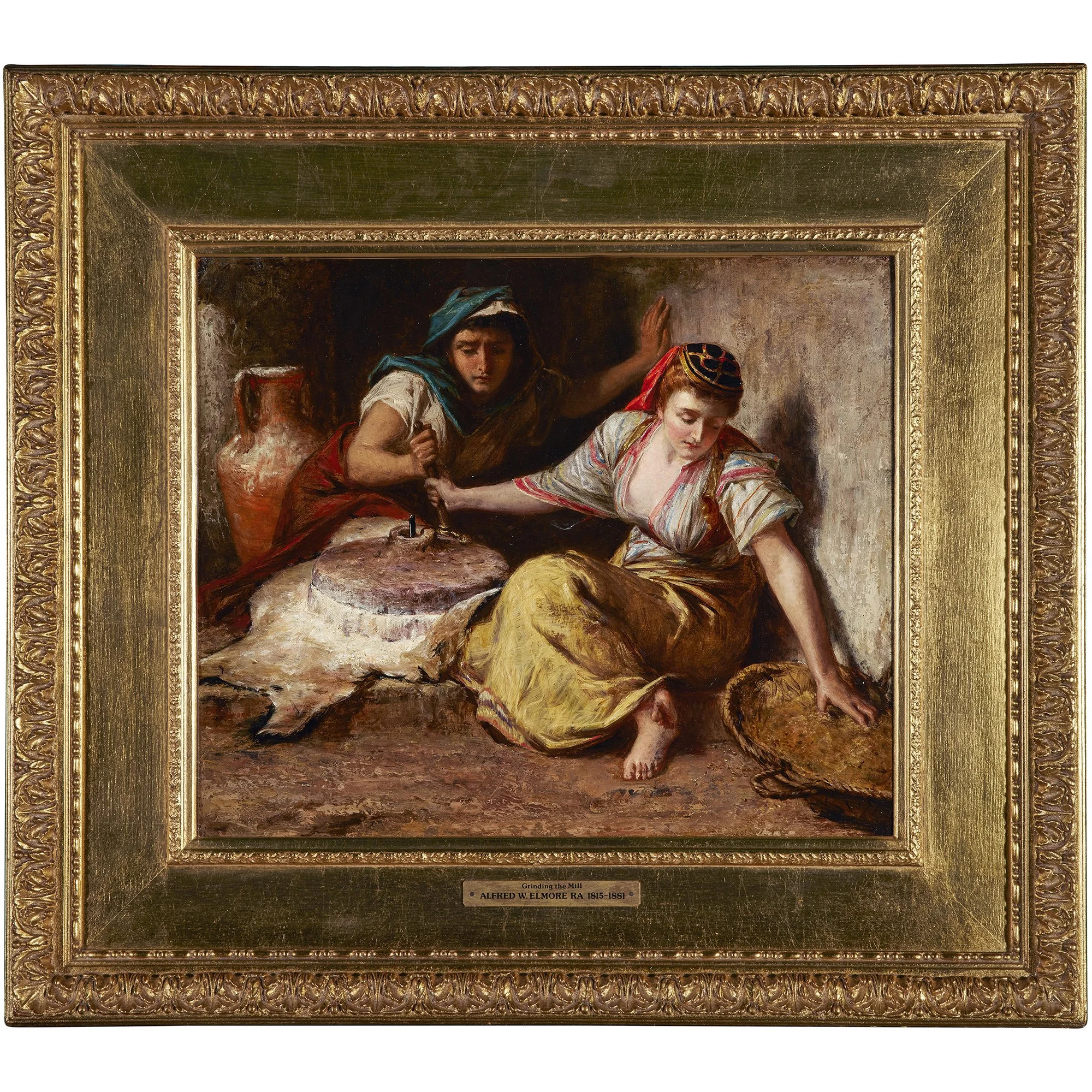Alfred Elmore R.A., H.R.H.A. 1815-1881
SOLD
Two Women Grinding at the Mill
Oil on wood, 35.5 x 43 cm.
Signed
Born in Clonakilty, County Cork, Alfred Elmore (illustrated, Alfred Elmore, R.A., H.R.H.A., Self-Portrait, The Royal Academy) travelled extensively in search of inspiration. He worked in London and Paris, and later in Munich and Dresden, Bologna and Florence. Like many artists of the period he was hugely influenced by a stay in North Africa which he first visited in 1866. Elmore exhibited several orientalist works in London and also drew on the experience to lend verisimilitude to works of biblical subject matter such as Judith and Holofernes (1871). Elmore had good local connections, his brother, Thomas, was Vice-Consul in Algiers and a talented photographer. Back in London, Thomas exhibited calotypes depicting images of different North African racial groups and the realism of his photographs was remarked upon by the press.
Elmore kept a large collection of North African items in his studio which was sold on his death. Some of the objects can be seen in his Algiers’ paintings such as Ayesha, (1876). Other ‘Moorish’ items listed in his studio sale included a quiver and arrows, wicker-baskets, rugs, scarves and dresses. Inspired both by the landscape and peoples of North Africa, Elmore equally, like a whole generation, came under the profound influence of Eugene Delacroix, who had found in Morocco ‘at every step…ready-made picture which would bring fame and fortune to twenty generations of painters’. Specifically, here he recalls in palette and handling, as well as in costume and facial type the French artist’s great masterpiece Femmes d’Alger. ‘As Julian Campbell has noted, apart from his large canvas in St Andrew’s Church, Westland Row, and one picture, Beppo, in the Crawford Art Gallery in Cork (from Gorry Gallery Exhibition, December 2015), Elmore is poorly represented in Irish public collection. But he was, a contemporary wrote ‘an artist who follows no beaten track; he thinks for himself, and works out his ideas in a spirit of independence, affording us great pleasure in the novelty of the subjects he places before us’. Here, in a work of colouristic brilliance, Elmore takes the hard physical work of women as his subject and imbues it with symbolic charge.


